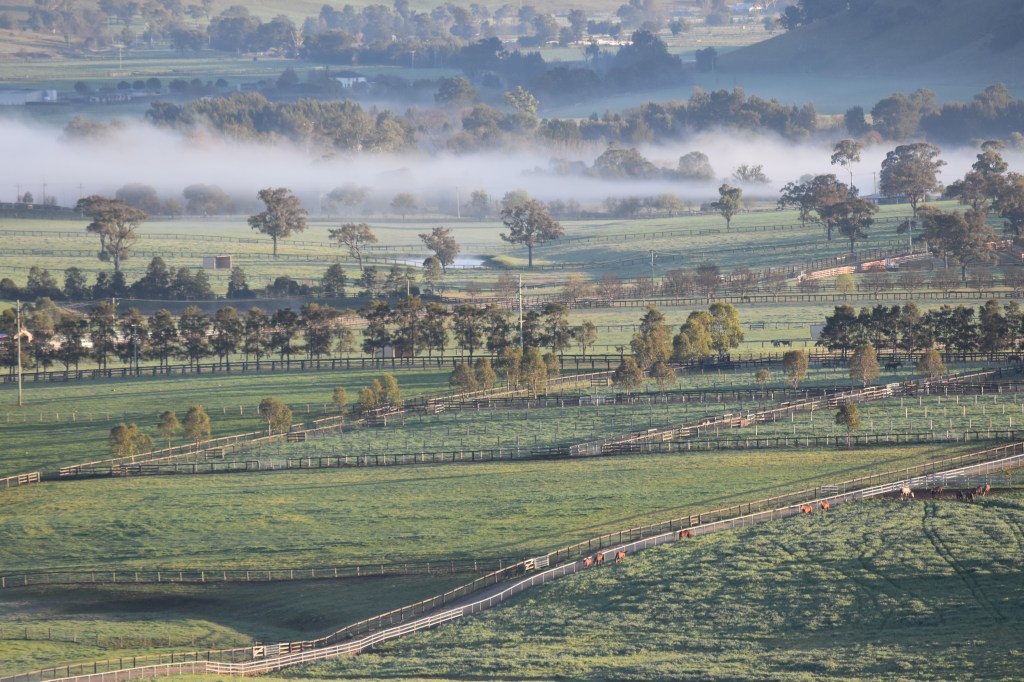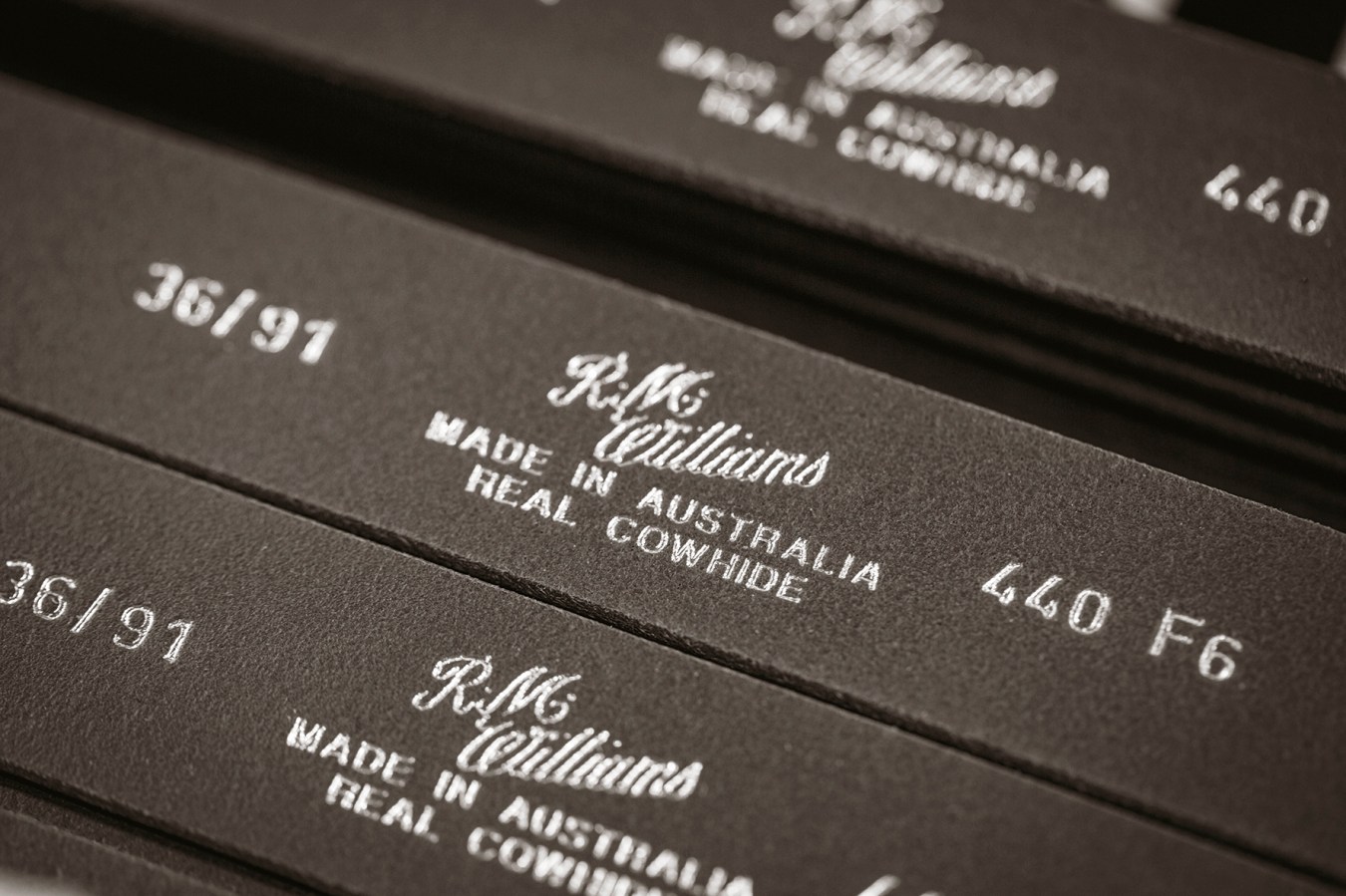Newgate Stud managing director Henry Field describes his work as venture capitalism, but in bloodstock. He reveals his passion for horses and how that drove his mission to build one of Australia’s largest stallion operations, now home to Extreme Choice, arguably the country’s most elite studhorse.

Henry Field might have been a polo player. He certainly never had a problem riding a horse. The boy from Coolah in NSW’s Upper Hunter Valley grew up with ponies and cattle work and was riding track for legendary racehorse trainer Gai Waterhouse as a teenager.
Field had been at school with former Australian polo captain Rob Archibald, a man he describes as “freakily” talented regarding polo skills. “He was unbelievable from when we were kids; he was a different class,” he says. He maintains Archibald tried to encourage him to take up the sport.
But it was the coordination (or lack thereof) between his hand, the mallet and the ball that ended his nascent polo career. “I couldn’t connect the ball with the stick,” he says.
So where do you go from the sport played by princes? The sport of kings.
About a decade ago, Field established what was to become Newgate Stud. This stallion operation now covers 1,500 to 2,000 mares per season and, with an 80% success rate, accounts for a good percentage of the 12,000 thoroughbred foals born in Australia yearly. He’s in business with co-owners Matthew Sandblom and Gavin Murphy. Field had seen people in the stallion business making serious money, and he had a dream to become a leading player in that market.
To do that, he initially thought he had to front up the serious cash to buy the best stallions. That turned out to be true – but not exactly in the way he thought.
A few years back, Pierro, who was a Golden Slipper winner and champion racehorse, came available for sale, Field remembers.
“In the space of a week, I flew from Japan [to] England, Europe, and all through Australia, raising the capital to buy this horse. We raised a syndicate of money, a vast pool of money, north of $30 million. And every time we bid on him, Coolmore [stud], the market leaders, outbid us, and we felt that whatever we bid, they would probably outbid us – because they were the biggest. Unless we could buy the elite horses, we won’t have a business.”
But then came the light bulb moment.
If the stallion business was built on the idea that the best racehorses make the best breeding stallions, why not develop them yourself?

So, at that point, Field decided to form a partnership to enter the yearling market. Rather than buying ready-made stallions for tens of millions of dollars, he decided to buy 25 yearling colts: “the best 25 yearling colts we could afford every year,” he says.
“We would hope, like venture capital, we could turn those horses into multimillion-dollar stallions. The average spend was, for the first few years, around $10 million.
“We’d pay about $400,000 average [per colt] – that’s the creamy end of the market without having bought million-dollar horses.”
He says in the first year, they invested in two colts, Capitalist and Russian Revolution, both of which became champion first-season sires and group-one winners. They’re now commanding stud fees of $77,000 and $88,000, respectively and breed around 200 mares annually.
“I think a lot of people that are invested in the Australian breeding industry do it because we love the horse. Right?”
Henry Field
Field admits that in any business, you need luck. He says it’s “worth a ton of judgment”; in this case, his judgment on those two horses allowed him to fund the business.
“We’ve created a model to race horses, which has been a profitable venture for us,” he says. “We’re the major shareholders in every stallion that we stand.
“Nearly every year that we’ve had the racing partnership, the colt syndicate that we do in partnership with the China Horse Club, and a bunch of leading breeders in Australia, has been a win.”
[The mainland-based China Horse Club, which counts Chinese high-net-worth individuals among its members, was founded by billionaire architect and entrepreneur Malaysian-born Teo Ah Khing and is a major partner and investor for Newgate.]
“We’ve had 15 stallions go to stud, because we’ve played the venture capital game buying baby stallions as yearlings rather than waiting until they were the ready-made horses,” he says.
“And it’s hard to get stallions. I mean, to put that in perspective, there are 6,000
colts [approximately] born every year – and there are about six commercial stallions that come out of [that].”
“Every year, we’ve averaged at least one highly commercial horse. This has allowed us to build our roster into what it is today, one of Australia’s biggest and most powerful.”
That roster includes Extreme Choice, who Field says is “statistically the best stallion in Australia”. He bases this on having the highest ratio of elite winners to runners of any stallion in the Southern Hemisphere.
In 2022, he was the most expensive stallion in Australia, standing at around a quarter of a million dollars. [The fee charged for him to cover each mare]. This year, he’s been pipped at the post by Yarraman Park Stud’s I Am Invincible, standing at $302,500 (including GST).
“We would hope, like venture capital, we could turn those horses into multimillion-dollar stallions.”
Henry Field
“We think that the only horse that outperforms [Extreme Choice] on metrics of elite runners to winners is Frankel, who is, at the moment, the best stallion in the world who stands in England. And he was the greatest racehorse there probably ever was. So, after Frankel, from a metrics point of view, he’s the best stallion on the planet.”
Field says they bought Extreme Choice after he had his first start. It’s a good thing because Field maintains he was a horse they probably wouldn’t have been able to afford once he’d achieved the levels he did on the racetrack.
Among other accolades, he was a Blue Diamond and Moir Stakes winner.
“We took the gamble that he would go on and scale the heights, which he did as a racehorse. And now he’s a pivotal stallion to Newgate, and we’ve already got one of his sons retired to stud – a horse called Stay Inside,” Field says.
“Stay Inside won the Golden Slipper, and he stands at a stud fee of $77,000. The mathematics on that lineage is very strong – very strong.”
Field’s joy in what he does is evident as we tour the Newgate estate near Scone NSW in his four-wheel drive. We’re at the top of a hill at the end of a dusty dirt track and he points out the neighbouring studs dotted around the bucolic valley – many of which represent his competition.

“It’s been a great ride for us,” he says.
“But it’s also that we’re competing with Sheikh Mohammed, the ruler of Dubai, as well as Vinery Stud, Gerry Harvey and John Messara [Arrowfield], who’s been an industry legend.
“We had to come in and do something different to try and compete with them without having to match their capital. And we’ve been able to create our own stallion factory, so to speak, where we’re producing stallions of our own, rather than paying 20 or 30 million for the colts once they’ve already won races.”
This year, Newgate has three new stallions: a Cox Plate winner, a Golden Rose winner, which is the championship three-year-old race in Sydney and a Blue Diamond Stakes winner, the champion two-year-old race in Melbourne.
Field says if Newgate is not the biggest player in terms of market share this year, they’re not far off, and he claims the stud is “certainly on a trajectory to be the biggest [by] market share if we can keep going at the rate we’re going over the next couple of years.”
But at the end of the day, the horse is what it’s all about, according to Field.
“I think a lot of people that are invested in the Australian breeding industry do it because we love the horse. Right?”
Issue Seven of Forbes Australia is out now. Tap here to secure your copy.


